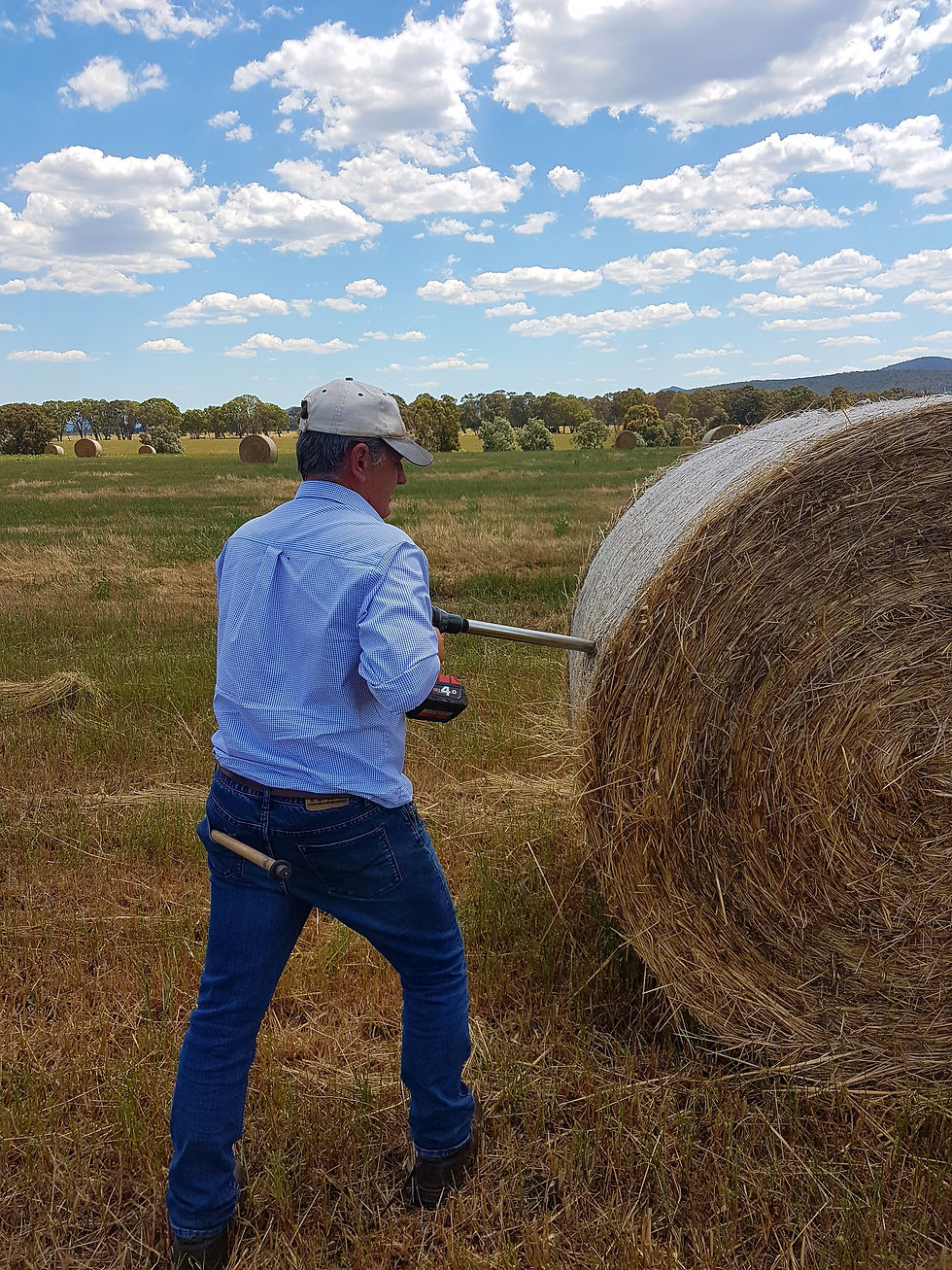UTILISING DRY SUMMER FEED
- Rebecca Thorn

- Dec 11, 2020
- 2 min read

With plenty of late season rain, paddock feed is looking strong this season. For those that have benefited from greater pasture growth and plenty of standing feed on the horizon, this year we may see a greater gap between grazing until supplementary feeding programs kick in reducing pressure on confinement feeding. Although there may be significant standing feed, remember that the basic parameters remain the same and we still need to meet animal requirements and understand the difference of feed vs. fill.
Protein is our best friend and worst enemy at the same time. Protein will give us optimal feed conversion and provide the critical foundations for muscle and skeletal growth. However, the reason for the love-hate relationship is that protein is very expensive. Last year we saw lupins top $700/tonne and protein hays north of $450/tonne.
With plenty of pasture feed, if left standing, it will have very high fibre content and very low protein. Therefore, it is more fill than nutritional feed. Depending on the goals and targets for specific livestock groups, we can take different methods to turn this feed into valuable gains.
To Grow Young Animals
Aim for absolute minimum of 16% crude protein (CP) over whole diet. Barley grain is 12-14% CP, and cereal hay is 8-11% CP whereas standing feed is 4-16% CP depending on the level of green available. These are all very low! Prioritise summer crops for this group for ease of management or balance a high lupin intake for low protein forage.
To Maintain Animals
Keep moving the mob through paddocks to make use of any green pick from late season or summer rains. At this stage, this strategy is looking very promising to support maintenance and achieve slight gains. Smaller paddock sizes are beneficial for rotational grazing. And if supplementary feeding is required, pair with a protein mix grain or protein hay for weight gain benefits.
For animals in good condition and when feed dries up, provide Bovine or Flock Boost Dry Feed that contains a slow release protein, as well as essential minerals and vitamins. Dry feed and cereals have poor mineral balance and little to no vitamins for uptake. However, the key element of this mix is the slow release protein. Consider the nitrogen to carbon ratio that is required in soil for optimal microbe activity; it is the same theory in the rumen. We need nitrogen to fuel the bugs to breakdown the carbohydrates in their diet, so by providing a consistent release of protein to the rumen microbes, we see better feed utilisation.
Something To Consider
With an extended period of mature standing feed that has flowered or gone to head, there is a risk of mycotoxin challenges from summer rains. This might result in animals acting strange, mis-adventurous, appearing to overheat in mild conditions or standing in dams/troughs.
If you suspect toxin or endophyte challenges, provide your cattle or sheep a toxin binding TPM Bovine Boost or TPM Flock Boost blend with product that contains Elitox®.
Our Consultants
EXPERTS IN RUMINANT PRODUCTIVITY
Mark Facy
0427 243 320
Owen Rees
0429 437 823
Mikaela Baker
0457 243 319
To download a copy of this article, please click the link below...
#tracanimalhealth #toxins




Comments